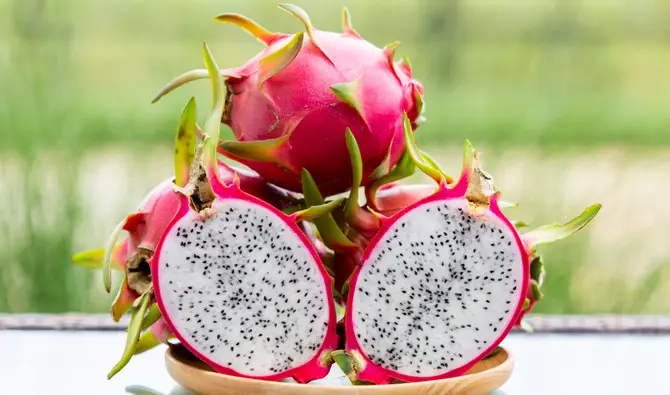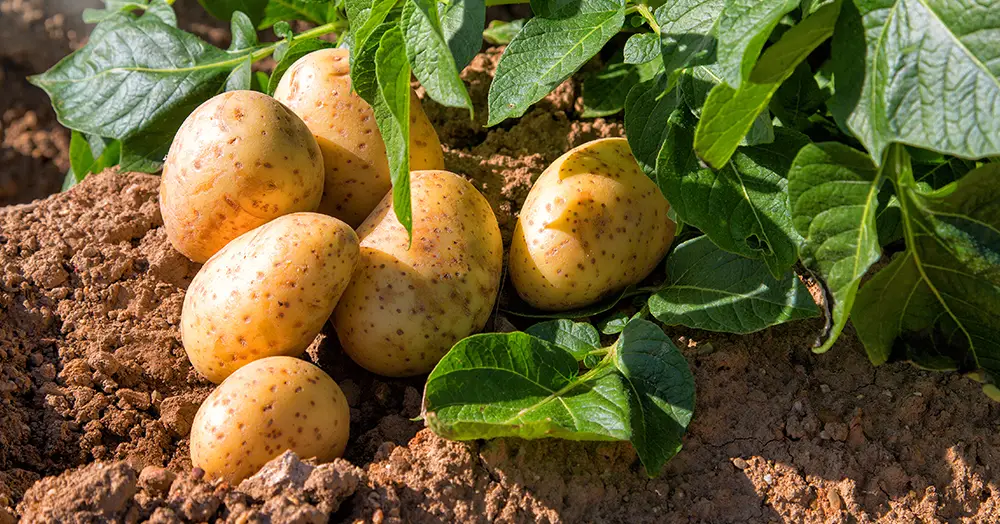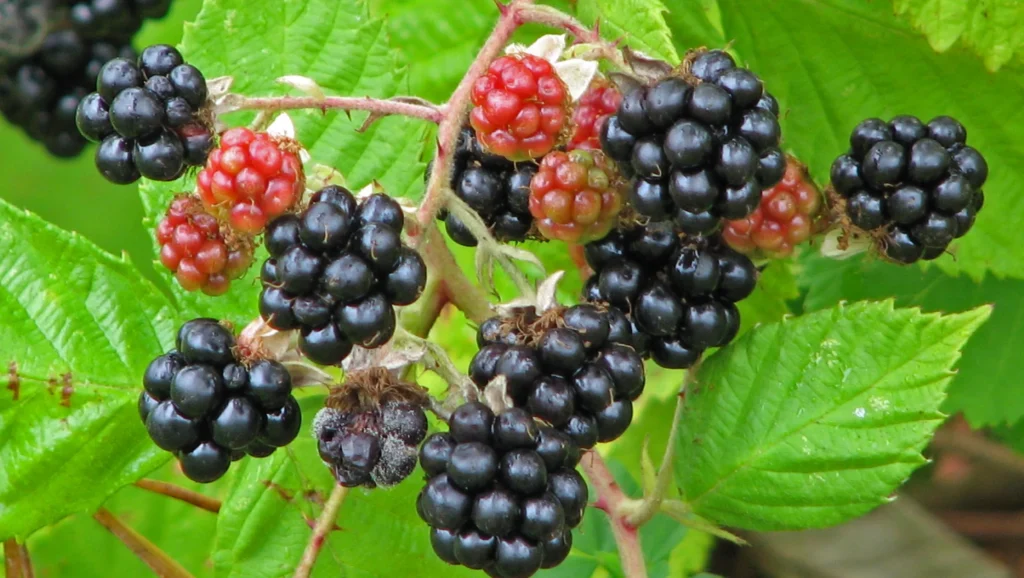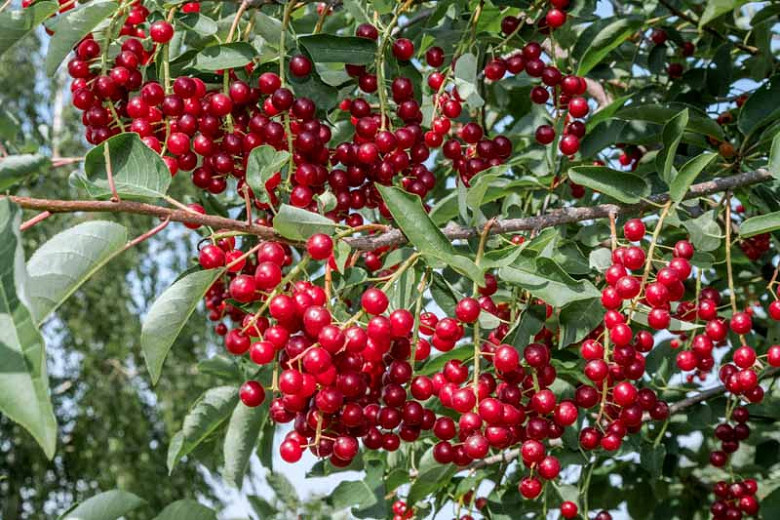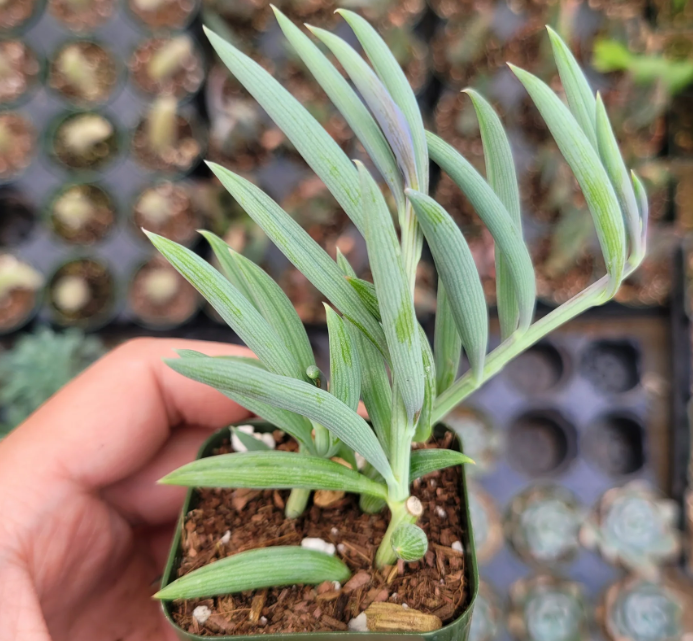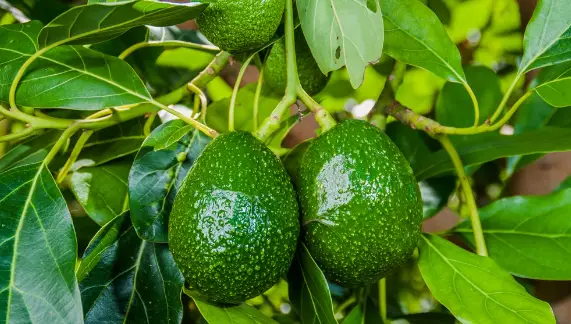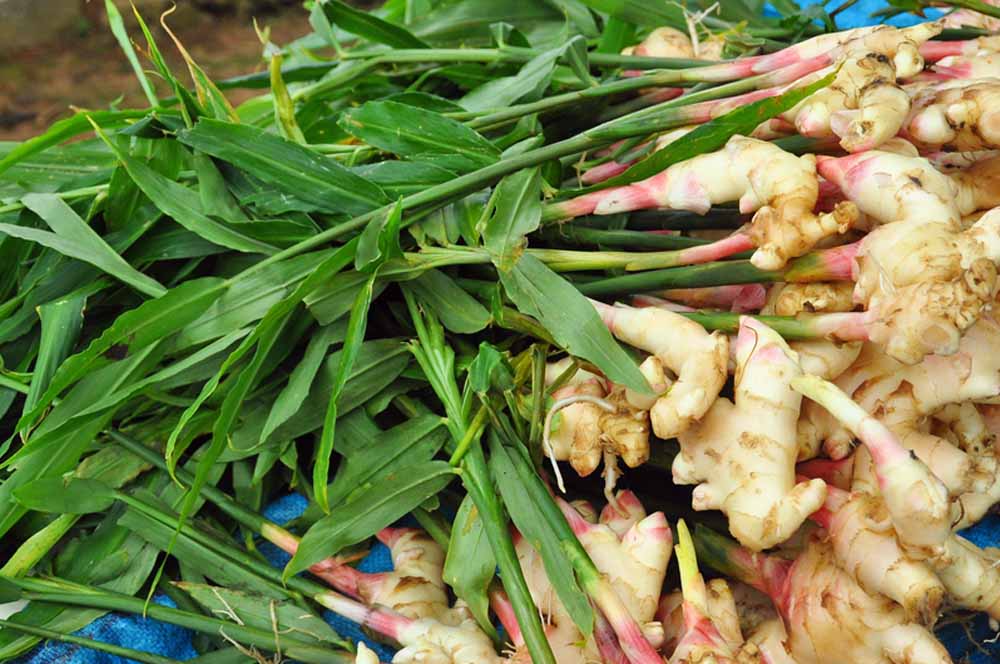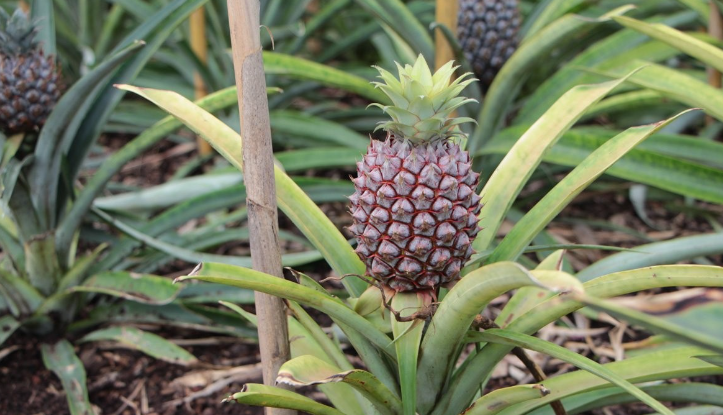Strawberry plants are a common choice for many gardeners, loved for their sweet taste and used in lots of recipes. These lovely red fruits are not only tasty but also full of good things for our health, like vitamins and antioxidants.
Knowing how strawberry plants grow from start to finish is useful if you want to have a successful harvest every year. We’re going to look at each step of the strawberry plant’s life, from when it’s a seed until it makes its own fruit.
Table of Contents
- 1. Seeds: The Beginning of Every Strawberry Plant
- 2. Germination: When the Seeds Start Growing
- 3. Vegetative Growth: When Strawberry Seedlings Develop
- 4. Flowering: When Strawberries Get Ready to Make Fruit
- 5. Pollination and Fertilization: How Strawberries Actually Make Fruit
- 6. Fruit Formation Transforms Fertilized Flowers into Berries
- 7. Harvest Time for Juicy, Flavorful Strawberries
- 8. Runners Enable Strawberry Reproduction and Propagation
- 9. Dormancy Lets Strawberry Plants Rest Before Renewed Growth
- 10. And The Cycle Continues…
1. Seeds: The Beginning of Every Strawberry Plant
Every strawberry begins life as a seed. Inside these tiny, dry packages, a new strawberry plant is waiting to spring up.
Strawberry seeds grow inside the actual strawberries we eat. When strawberries ripen, you can see the small yellow seeds on their outside. Every strawberry has about 200 seeds on average.
These seeds spread around the environment when strawberries fall or get picked. Some berries on the ground will rot and their seeds will go into the soil. Also, sometimes birds and other animals eat strawberries and then their seeds get spread through their droppings.
Farmers who grow strawberries for a living collect seeds from ripe fruits, dry them and save them to plant later.
If you’re growing strawberries at home, you can get seeds by taking them from ripe strawberries or you can buy good-quality seeds from a store that sells seeds.
No matter where your strawberry seeds come from, this is the very first stage of life for the plant. Even though the seeds are very tiny, they have everything inside to eventually make yummy strawberries.
2. Germination: When the Seeds Start Growing
To grow into little plants, strawberry seeds need to germinate. This is when the seeds wake up from resting and start to grow for real.
Three things have to happen for strawberry seeds to germinate. First, they need enough water in the soil, which lets the seed soak up water and the little plant inside start to grow bigger.
Next, they need warmth. Strawberry seeds do best when it’s warm, around 68-86°F (20-30°C). If it’s too cold, they might not germinate at all.
Last comes air. The growing plant inside the seed has to have oxygen, so the soil needs to be loose and drain well so the seeds can breathe.
Once these conditions are right, the seed starts to change inside. The plant starts growing and sends out a little root going down into the soil, and a little shoot that comes up toward the light.
If everything’s perfect, strawberry seeds might start to grow in just 5-12 days. But if it’s chillier, it can take up to 3-4 weeks.
With the right planting, steady water, and warm temperatures, strawberry seeds can germinate and begin their journey as plants.
3. Vegetative Growth: When Strawberry Seedlings Develop
After the seeds have germinated, the baby strawberry plants start to grow bigger and stronger. This is called the vegetative growth phase, and the plants work on making lots of leaves, roots, a stem called a crown, and thin stems that spread out called runners.
First, they focus on growing roots. A main root digs down deep and smaller roots spread out close to the soil’s surface. This helps the plant be stable and get water and nutrients.
Little leaves also start to open up and make food for the plant using sunlight. More and more leaves and new shoots keep coming as the seedling gets bigger.
The stem at the bottom, the crown, also gets wider. This is where all the leaves, roots, and runners come out of, and it’s also a place where the plant saves some food for later.
Runners are special stems that the strawberry uses to make more plants. They grow along the ground and have little leaves and spots that can turn into new roots, making a new plant that’s the same as the parent plant.
During this time, the strawberry plants are putting all their effort into growing bigger and not into making flowers or fruit. But soon, they’ll be ready to do just that.
4. Flowering: When Strawberries Get Ready to Make Fruit
Once the strawberry plants are big and strong, the shorter days and cooler weather in the fall tell them to start getting ready to make flowers. This is the beginning of the plant’s reproductive phase.
Little flower buds pop up from the crowns in late summer or fall. These flowers have five white petals and a yellow center full of pollen and the part that makes seeds.
Most strawberry flowers can make seeds all by themselves because they have both the parts that make pollen and the parts that use it. This is called self-pollination.
The first time the strawberries flower, it lasts about 2-3 weeks. Not every flower will turn into a fruit, though. Some might not get pollinated and will just fade away.
Sometimes, there’s a second wave of flowering in early spring. The strawberry plants open up lots of flowers again, making a beautiful sight.
This flowering stage is very important, because it leads to the strawberries being pollinated, the flowers turning into fruits, and the fruits getting ripe and ready to eat.
5. Pollination and Fertilization: How Strawberries Actually Make Fruit
To get from strawberry flowers to tasty fruit, they need pollination and fertilization. This important step happens when the flowers are open.
Pollination is when pollen grains from the strawberry’s male parts move to the female part, called the pistil. This leads to the creation of seeds inside the flower.
The wind and bugs help pollen travel from one flower to another. Bees play a big role in moving pollen between different kinds of strawberries.
Strawberries grow the best fruit when pollen goes from plant to plant, but a single strawberry flower can also pollinate itself.
Once a flower is pollinated, it starts to make strawberries. Each tiny seed we see on the outside of a strawberry comes from one of the fertilized parts inside the flower.
It usually takes around a month before a pollinated strawberry flower turns into a ripe berry you can eat. If it’s sunny and warm, the strawberries will grow faster.
Pollinating the strawberry flowers well is important to get lots of fruit instead of empty plants.
6. Fruit Formation Transforms Fertilized Flowers into Berries
After the flowers are pollinated, the strawberries start to form. This is when the tiny green part at the base of the flower starts to grow into a strawberry.
In the following weeks, the green part gets bigger as its cells grow and substances like sugars help feed it.
This small green part then turns into a white berry and after some more time, it gets its round shape.
As the strawberries keep on growing, they change from white to pink and then to a bright red color. When they’re red, we know they’re almost ready to eat.
In the last step, the strawberries get sweeter as starches change into sugars and other flavors develop, giving us the taste we love.
Each strawberry then has as many as 200 tiny yellow seeds on its surface, completing its change from a flower to a ripe berry.
Things like temperature, sunshine, water, and nutrients all contribute to making great strawberries. This whole process can take between one to one-and-a-half months, depending on the conditions.
7. Harvest Time for Juicy, Flavorful Strawberries
Months after planting, it’s finally time to pick the ripe strawberries. Harvesting them at the right time makes sure they taste the best.
Strawberries become ripe one after the other. So, it’s good to keep an eye on them every day as they turn red to figure out when they’re just right.
The morning is the best time to pick strawberries, once the dew has dried. It’s important to be gentle to avoid hurting the fruit.
You should choose strawberries that are big, firm, and a deep red. Don’t pick the ones that are soft, have mold, or are still a bit green. The ripe ones will come off the stem easily.
During the peak season, you should try to harvest every few days. This keeps them from going bad on the plant. Picking off the old ones also helps more flowers grow.
Use small containers for picking strawberries so they don’t get squashed. Chill them soon after you pick them.
Strawberries are best when eaten fresh, as they don’t last very long after being picked.
Looking after the strawberries all season makes the harvest really rewarding.
8. Runners Enable Strawberry Reproduction and Propagation
Early in their lives, strawberry plants grow runners, which are long stem-like parts. These runners help the plant make more of itself.
Runners spread out from the main strawberry plant and start growing new baby plants when they touch the soil. These new plants are exactly like the big plant.
From one strawberry plant, you might get 10 to 15 baby plants from the runners in just one year. New runners grow from these baby plants too, which means you get even more strawberries.
If you don’t want your strawberry plants to spread too much, you can cut off the runners. But, by letting some runners grow, you get new plants that you can put in the ground elsewhere.
Once the baby plants grow their own roots, you can separate them from the mother plant and plant them in a new spot.
Runners are a clever way strawberries spread and make more plants without having to grow from seeds.
9. Dormancy Lets Strawberry Plants Rest Before Renewed Growth
Once it starts to get colder, strawberry plants begin to rest, getting ready for next year. Shorter days and cooler temperatures tell the plants to slow down.
The strawberries stop growing, the runners don’t make any more new plants, and fewer leaves come out.
While they’re dormant, the plants aren’t dead. They just don’t do much and need less water. They keep their energy in the main part of the plant for later.
By resting, strawberry plants handle the cold better and are more likely to survive the winter.
Dormancy is a time for the plants to recharge and get ready for the busy time of growing and making fruit in the spring.
Even though we don’t get berries in this time, it’s important for the strawberry plants to stay healthy and keep producing fruit for years.
10. And The Cycle Continues…
Strawberries have a yearly cycle. It begins with seeds that grow into baby plants, which then become big plants with flowers.
The flowers make berries after pollination, and runners create new strawberries, leading to more and more plants. After a while, the plants rest and get ready to start growing again.
Understanding how strawberries grow helps gardeners take better care of them and get more fruit.
If you know how strawberries live and grow, your plants will do well, and you’ll have lots of delicious berries year after year. So why not grow your own strawberries and enjoy this fresh, sweet treat right from your garden!

